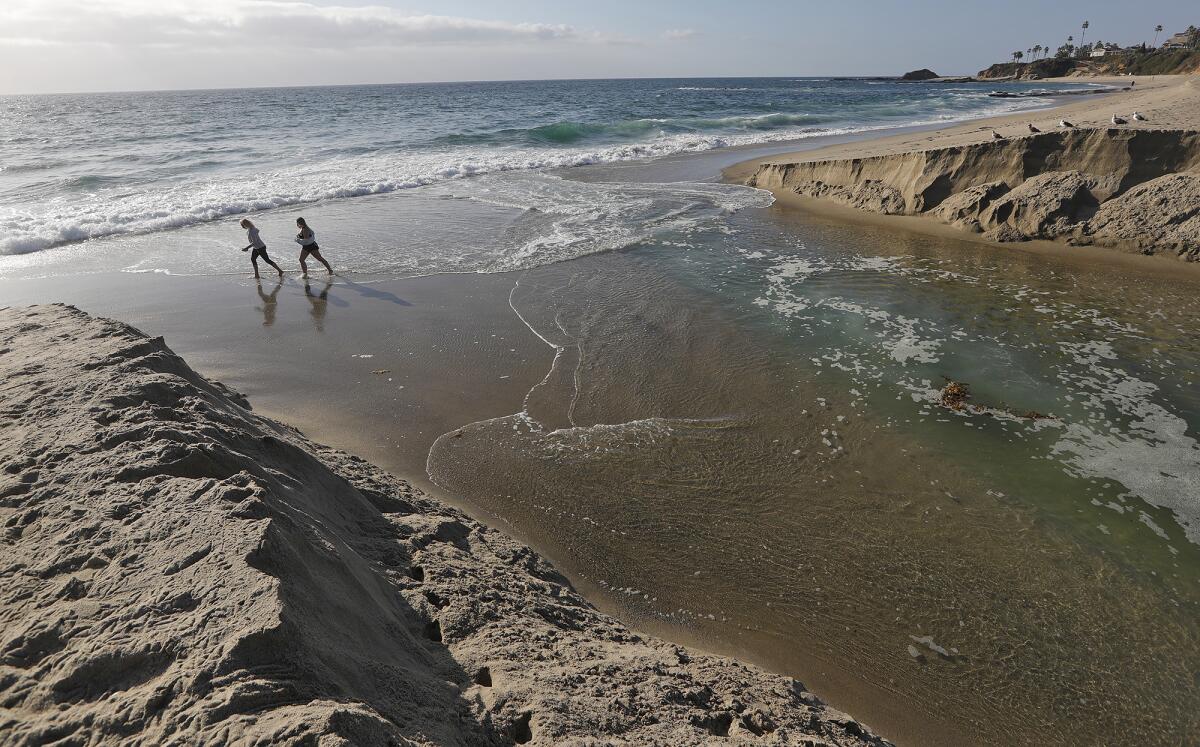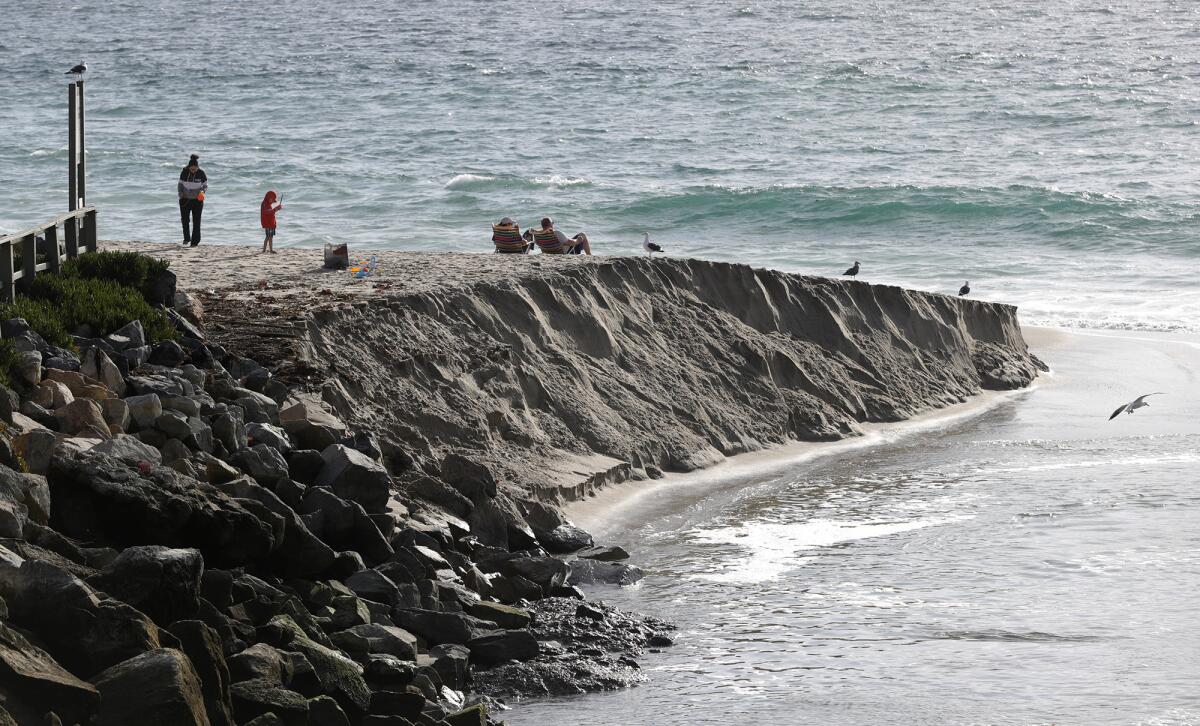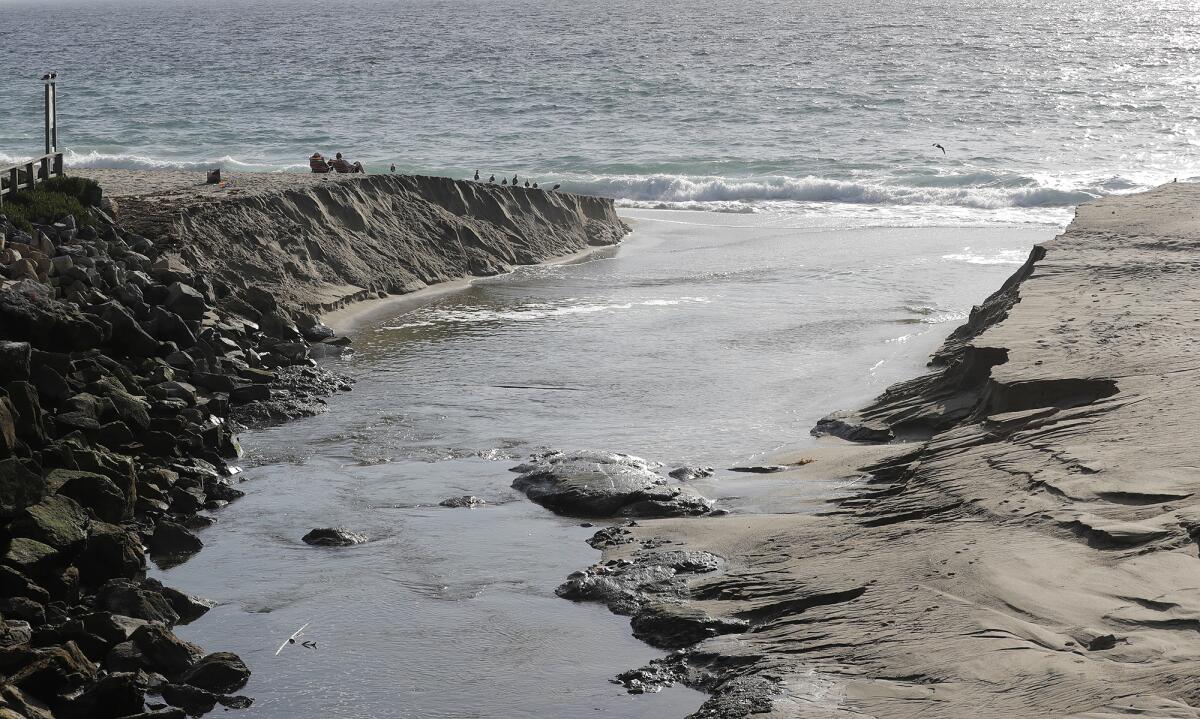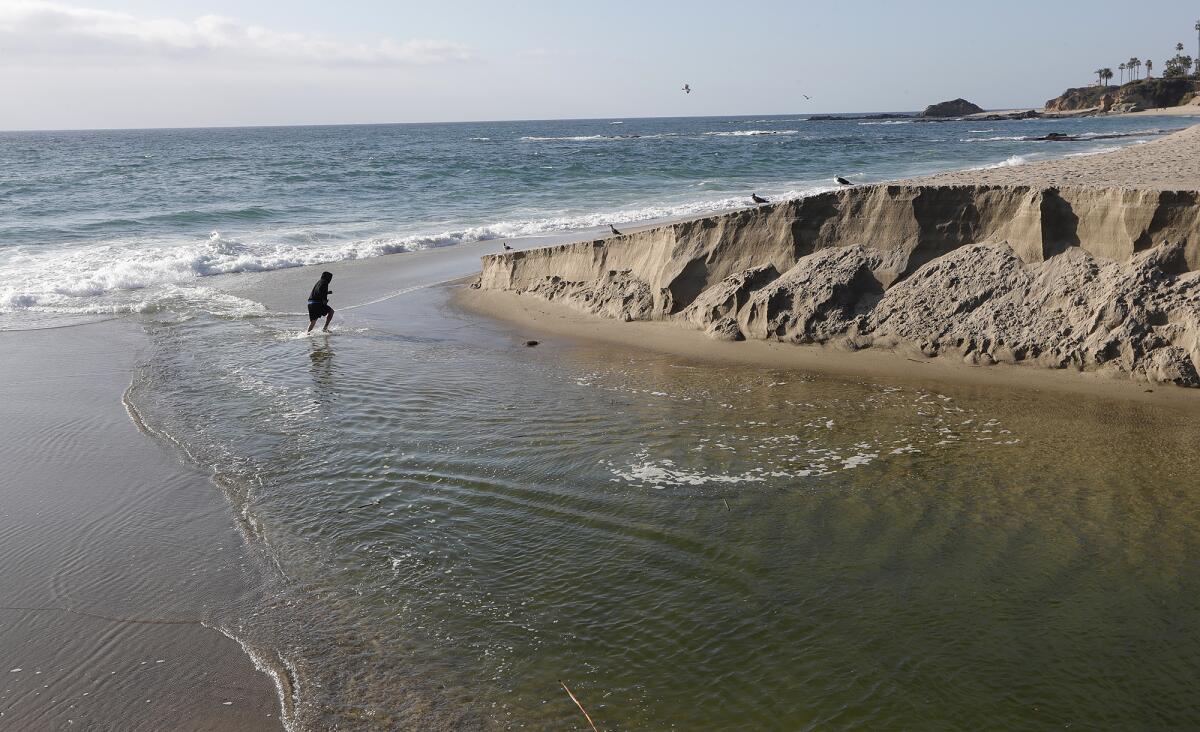Environmentalists advocating for enforcement to protect sand berm at Aliso Beach

The seaside community of Laguna Beach is home to a great many beaches, and of course there are beach and ocean enthusiasts aplenty.
Local environmentalists lately have expanded their efforts to seek protection of a sand berm at Aliso Beach, a county beach in South Laguna Beach, calling on various entities to bring about enforcement measures to help put a stop to its breaching.
The berm acts as a natural barrier that separates ocean water from urban runoff in the adjacent creek. Waves from the ocean and the flow of water from Aliso Creek push sand in opposing directions that create the berm, the shape and location of which is ever-changing.
It is not always left in place, however, as environmentalists have pointed out that beachgoers sometimes dig out and open up the mouth of the creek to create standing waves, which are popular with skimboarders, who surf on shallower water.
Michael Beanan of the Laguna Bluebelt Coalition said that the group is not against the skimboarding community, but he is bothered by seeing the berm breached, which he said leads to contamination of the beach.
The environmentalists have urged the California Coastal Commission and the San Diego Regional Water Quality Control Board to support their request for enforcement to protect the berm, the public and ocean water quality, Jinger Wallace of the Laguna Bluebelt Coalition said.

The effort to seek enforcement started at the local level, Beanan said. Marisa O’Neil, a spokeswoman for OC Parks, said in a statement that OC Parks and OC Lifeguard personnel “take an educational approach to ensure people do not attempt to go in the creek flow, manipulate the water flow, get too close to the banks or attempt to cross while the water is flowing at a high rate.”
O’Neil added that further measures have been taken. She said signage has been posted that advises beachgoers to avoid going into or digging out the creek.
Beanan and others contend that writing citations would be a more effective way of protecting the berm. He has also argued there is an environmental justice component to their campaign.
“Disadvantaged communities travel a long way to spend a day at the beach with their family, and they wind up coming to a beach that is contaminated,” Beanan said.
When the berm is breached and the creek spills into the ocean, the contaminants can spread up or down the beach, depending on the current of the ocean water. Beanan said breaching the berm also limits beach access.

“When the creek is breached and flowing, it makes it difficult, if not impossible to move to the northern side of the beach, so literally a thousand beachgoers must cluster close together on the remaining beach in front of the parking lot,” Beanan said.
Activists are also concerned about the amount of water in the creek, which they say is the result of overwatering from inland areas. Wallace has worked with a group collaborating to reduce urban runoff. She said that the partners include the Moulton Niguel Water District and several inland cities, among them Aliso Viejo, Laguna Hills and Mission Viejo.
David Gibson, the executive officer of the San Diego Regional Water Quality Control Board, said the board has prepared an investigative order that has been submitted to Orange County. He said as the board looks into the matter, it will be mindful of the perspective of the involved municipalities regarding “what is practicable to do in terms of managing human behavior on the beach.”
“The board is concerned that at any time that you have potentially high levels of bacterial indicator-containing water, you may have pathogens,” Gibson said. “Those pathogens may represent a risk at some level to the public, but for the activities of the skimboarders who opened up the channel, that water would be retained behind the berm inside Aliso Creek.
“While the public are not prevented from accessing it and indeed splashing around in it, the fact that they actually undertake an effort to open that channel up to create that standing wave presents both a physical risk to certain members of the public, as well as potential exposure to pathogens or bacterial indicators in the water itself.”
Gibson said the board will consider the results of the investigation to decide what regulatory course to take.

All the latest on Orange County from Orange County.
Get our free TimesOC newsletter.
You may occasionally receive promotional content from the Daily Pilot.




